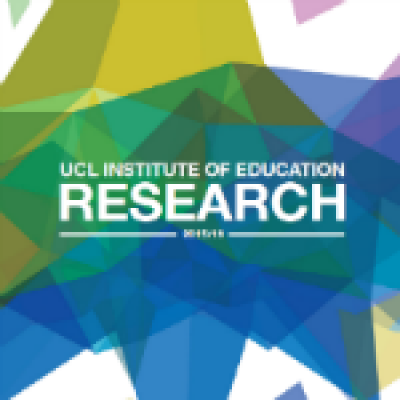New book from IOE academic looks at eye contact in connection to autism
11 July 2018
UCL Institute of Education (IOE) academic Dr Terhi Korkiakangas has released a new book exploring the role of eye contact in communicative actions and what implications this has for people with autism

The book suggests that if gaze is used for some communicative actions in social interactions, then perhaps it is those actions that are important, and not so much gaze itself. With this in mind, autistic people might sometimes accomplish those communicative actions in different ways and this ought to be identified and how they do it understood.
This offers a new perspective on frequent interpretations of reduced eye contact from autistic people signifying communicative impairments, less interest in the social world, or that they try and avoid interactions altogether with other people.
'Communication, Gaze and Autism: A Multimodal Interaction Perspective' draws on Dr Korkiakangas' video-based research on social interactions and shows how a multimodal interaction perspective can shed new light on gaze, and contribute to our understanding of autism and communication beyond talk and linguistic resources.
The book studies real-world instances of mutual gaze and gaze aversion during talk and silence in settings such as homes and schools with participants including parents and teachers. It also considers the voices of those people on the autism spectrum who suggest that eye contact has less significance for them and represents a communication difference, rather than a deficit.
Dr Korkiakangas also reconsiders the notion of 'impairment', which is often used in connection with autism. The book notes that despite the fact autistic children may not always look at a speaking person to show their attention, these children are very tuned in with their co-participant and the interaction at hand and can have other bodily or multimodal means to engage.
This includes children carefully violating the normative use of gaze, for example, 'teasing' a teacher by not looking them in the eye when commanded to do so.
The book suggests that in this instance the psychological language of impairment seems to be problematic and limited, and people should re-think these terms and instead understand them as communicative preferences.
'Communication, Gaze and Autism: A Multimodal Interaction Perspective' was published on 4 June 2018 by Routledge (Taylor & Francis). It includes a methodological introduction, practical tools for doing multimodal interaction research, and empirical findings. It is designed for anyone with an academic, professional or personal interest in autism.
Media contact
Rowan Walker, UCL Media Relations
T: +44 (0)20 3108 8515 / +44 (0)7769 141 006
E: rowan.walker@ucl.ac.uk
 Close
Close


